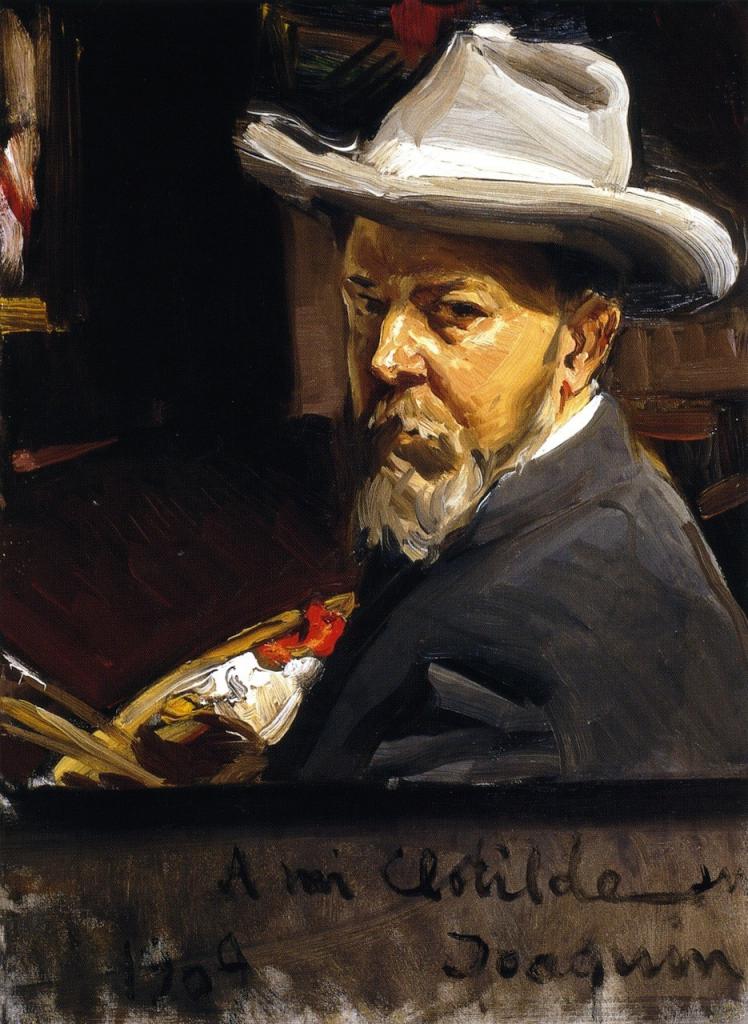The second half of the 19th century - the heyday of a new direction of painting - impressionism. Innovative artists managed to capture and depict on their canvases the play of light and its shades - all this to the delight of the public, which enthusiastically accepted the “sunny” and “airy” paintings. All the young picturesque beau monde of that time flocked to Paris. Among others, the novice Spanish artist Joaquin Sorolla. It was in the city on the Seine that he was impressed by impressionism and found his own style: light, cheerful, marine, while traditionally in Spain, painters preferred academism and a dark palette.
Beginning of the creative path

Joaquin Sorolla y Bastide was born in Valencia on February 27, 1863. Hard trials fell on him very early. When the boy was two years old, his mother and father died of cholera. The kid and his sister were taken to aunt's family. Joaquin's uncle was a carpenter, and the boy was supposed to follow in his footsteps. However, the school noted a talent for drawing and began to develop it. Praise to his uncle, who supported his nephew's abilities and presented him with a box of paints at graduation. Joaquin was then 16 years old, and he went to improve his talent at the Higher School of Fine Arts in Valencia, and after another 2 years - in Madrid, where he comprehends the work of Spanish predecessors. He studies, actively participates in competitions and paints the first pictures to order in order to gain financial independence. Sorolye was not yet twenty years old when he met his future patron - photographer and philanthropist Antonio Garcia Peris. The daughter of the philanthropist Clotilde later became the wife of Joaquin.
Soon, the artist comes to national recognition. In 1883, his painting "Prayer of the Nun" receives a gold medal at an exhibition in Valencia. A year later, in Madrid, the huge battle canvas “Defense of the artillery battery of Monteleon” was noted and awarded Soroli with a grant for a trip to Italy. But not Rome will become a place of creative self-determination of the artist, but the capital of France. In Paris, Joaquin gets acquainted with almost as young as he is, impressionism and realizes that he has found his way in painting.
Impressionism and Success
The flowering of the Spaniard was accompanied by happiness in family life. During the first 6 years of marriage, Joaquin and Clotilde had three children. An important topic of paintings by Joaquin Sorolla is family, children. They are favorite models. An example of one of such canvases is “My Family” (1901), on which the author captured both his loved ones and his reflection in the mirror.
The first major success at the global level comes to Sorolla in 1892. At exhibitions in Madrid and Chicago, his painting “The Other Margarita” is encouraged by medals. The audience and critics enthusiastically accept the following works of the artist: “Laundresses”, “Return from Fishing” (1895). Museums immediately acquire his paintings, and this is also a sign of highest recognition.
In 1900, at the World Exhibition in Paris, an entire exposition of works by Joaquin Sorolla was held, and the author was awarded the Legion of Honor, and was elected a member of the famous art academies of the world.
In the next decade, Sorolla holds grandiose exhibitions of his paintings in different countries. For example, in 1906 in Paris, he collected 500 paintings. And in 1909 in New York, from more than 300 paintings exhibited, he sells 195 - this is an unprecedented success. The President of the United States and the famous magnates order their portraits to the Spaniard.
Along with fame, money also comes to the artist. Joaquin Sorolla is building a beautiful house in Madrid, which now houses a museum.
The paintings of the Spaniard are very revealing examples of impressionism, while having a bright author's style. The heroes of the paintings - ordinary people, often women and children - against the backdrop of Spanish sea and sand landscapes. Penetrated with light, written with an air brushstroke, showing the beauty of the world - it is not for nothing that the general public likes them so much. It can be said that the world took a fresh look at Spain thanks to Sorolla's work.
A heavy load of creativity
Since 1911, an artist commissioned by the American philanthropist Huntington begins to write a series of paintings, "A Look at Spain." Sorolla was required to write 14 huge canvases with a total area of about 240 m 2 to decorate the walls of Spanish society in the United States. The painter has worked tirelessly for 8 years, travels a lot around his homeland in search of stories and heroes.
Continuous creative work without rest has greatly exhausted Sorolla. Illness overtook him in the garden of his own home, right at work. In 1920, the artist suffered an apoplexy stroke and paralysis, so the last 3 years of his life he could no longer write. Sorolla died at the age of 60.
The creative heritage of Joaquin Sorolla
The artist left behind an extremely large number of works - more than 2000. A significant part of his paintings was transferred to the Spanish Republic. Some of them can be seen today in the house-museum of Joaquin Sorolla in Madrid.
The public still loves pictures of the Spaniard so far: exhibitions of his works collect half a million visitors. The artist’s work was continued by his children: one of the daughters was engaged in painting, the other in sculpture, and the son managed the Sorolla Museum in Madrid until the end of his days.